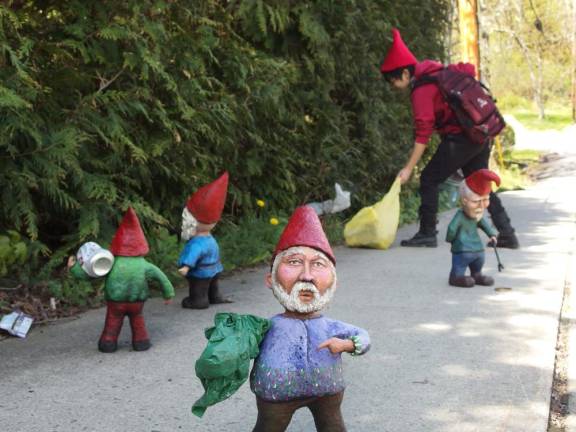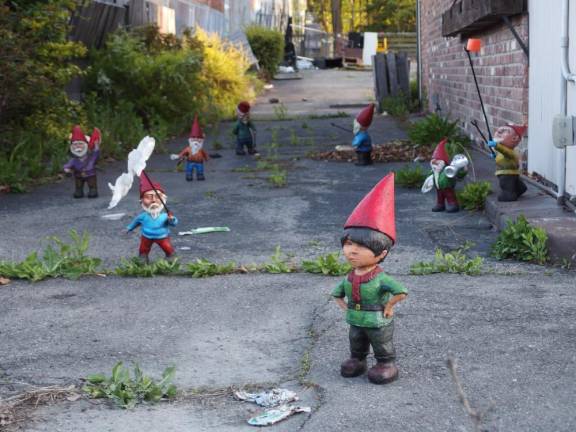Merrymaking in the face of catastrophe
The coming of age of an artist-environmentalist




Maxine Leu had a front-row seat to the effects of climate change growing up in Taiwan. She describes her native country, where she lived until 2015, as “a sea island with a geographical area smaller than New York State, but with a greater population. Taiwanese and the ocean are symbiotic.” After earning a bachelor’s in fine art in her homeland and a master’s in sculpture from SUNY New Paltz, Leu has joined the vanguard of artists making the environmental crisis the crux of their work. Her creative process embraces upcycling and recycling, and many of Leu’s interdisciplinary works feature repurposed materials such as paperboard boxes, found objects, paper pulp, and other forms of garbage. There is no shortage of artists tackling global warming and waste production – or ‘bio annihilation’ as described by some diehard environmental scientists. Leu’s international perspective and artistic practice reflect these ever-deepening cross-cultural dynamics and concerns about overconsumption facing societies both West and East.
Her nomadic installationWhen Gnomes Need to Clean Their Homes (2020 to present) is a spirited and darkly playful reminder to take note of the proliferation of waste in our surroundings. This pop-up work features a series of small, litter-picking garden gnomes created from recycled materials. Leu places the little band in random public areas and positions them as a working clean-up team. She refers to these characters as “mini-environmentalists,” each with a “unique personality and posture.” The mysterious troop is imbued with the soul of an activist, janitor, volunteer, and immigrant, and they go about their work with a faint sadness that comes from encountering our lack of care for the environment. By infusing these projects with critical humor and a bit of mischief, Leu inspires a conversation about the culture of waste in America and beyond.
Leu is ever-ready to join forces with various arts communities around New York, including studios and educators, for cross-field collaborations and social practice projects. The heart of her practice also works toward educating others on the value of recycling. “Besides what environmental and eco artists do, I think all artists and art educators can be the role model for our next generation,” she said. “For example: in an art classroom, art instructors can encourage students to reuse materials and not waste materials... In art community spaces, we can set up material and second-good tool exchange events for repurposing, sharing and treasuring materials.”
Another interactive eco-work titled Plady (2017 – present), as in plastic-lady, demonstrates Leu’s manner of merrymaking in the face of the catastrophic expansion of plastic in recent decades. For this performative work, Leu dons an outfit that she made entirely of blue plastic supermarket bags, approximately 300 total (fewer than the 500 used by the average American each year). Wearing this bright and bulky sculptural work as a costume, Leu visited Main Street in New Paltz to clean up trash in the area. She documented her activities through a series of photos and video that details Plady’s adventures as a lone trash collector, wandering around a supermarket and other parts of town.
The solemn persona of her character reflects the seriousness of the topic, and toward the end of the video she states: “My name is Plady. I was created by you.” Her inspiration for the piece, she explained, is “the phenomenon of excessive consumption in the U.S. feeds the culture of waste. The supermarket provides so much to see, and many more products than consumers truly need. Before Ulster County’s Bring Your Own Bag Act, I’ve seen Americans using two or three plastic bags for a bottle of Coke, then throwing the plastic bags into the trash afterward, and many of them don’t see this waste as a problem,” she said.
“Art is a powerful tool for cross-cultural nonverbal communication,” said Leu. “It touches our super-sensory perception and can make people see things from another angle.” It is artists like Maxine Leu who provide imaginative angles that inspire us to a higher standard in caring for our Mother Earth.